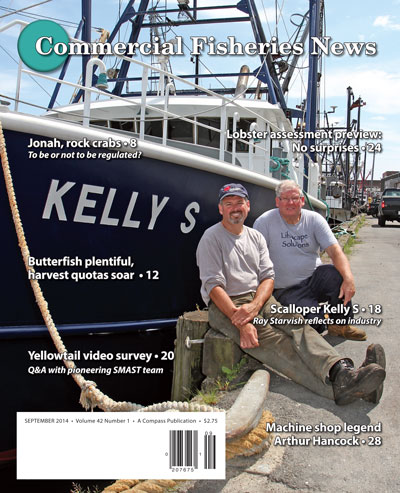When you purchase an EPIRB, you can’t miss the instructions about how to register it with the National Oceanic and Atmospheric Administration (NOAA) Satellite and Information Service, but we sometimes forget that we have to re-register each EPIRB every two years.
 When mine came due, I received a notice from NOAA, and that was handy because I had forgotten that a second year had elapsed since I first registered. Of course, there is that sticker that you put on the EPIRB to remind you when to register next, but I only use my EPIRB for kayaking in the summer, so many months can go by without my seeing the EPIRB or the sticker, and I expect some fishermen may miss the date, too.
When mine came due, I received a notice from NOAA, and that was handy because I had forgotten that a second year had elapsed since I first registered. Of course, there is that sticker that you put on the EPIRB to remind you when to register next, but I only use my EPIRB for kayaking in the summer, so many months can go by without my seeing the EPIRB or the sticker, and I expect some fishermen may miss the date, too.
Earlier this year, the Federal Communications Commission (FCC) in Washington, DC issued an advisory on the topic of emergency beacon registration.
The advisory noted that there have been commercial fishing incidents where casualties have been kept to a minimum because onboard EPIRBs were properly registered, maintained, and routinely tested.
There was a recent situation in which a crewmember grabbed the EPIRB just before abandoning ship so that it was available to signal for help from the life raft. That quick thinking and action helped save several lives.
At the same time, other incidents have escalated because EPIRBs either malfunctioned or were not registered, hampering the search and notification of friends and family.
Three federal agencies are directly involved with emergency beacons. NOAA maintains the satellite system SARSAT, which stands for Search and Rescue Satellite Aided Tracking. The FCC requires all users to register their EPIRB with NOAA and levies fines for failing to do so. And, the Coast Guard monitors the system and responds to pings.
The penalty for failing to register can reach $112,500 – no small amount, especially considering that it takes about 10-15 minutes to update your registration online at <www.beaconregistration.noaa.gov> and there is no charge for doing so.
Beacon types
According to the FCC, there are three types of emergency beacons: EPIRBs for marine use; emergency locator transmitters for aviation; and personal locator beacons (PLBs) for land-based use. All three use the 406-MHz frequency that is reserved for emergency use only.
A PLB, while potentially useful, is not recommended because it’s not built to withstand the elements and the marine environment.
Most commercial fishermen are familiar with EPIRBs because they are highly recommended for all vessels and required on vessels 36′ and up operating beyond the 3-mile limit.
Now there’s an additional acronym to understand – GPIRB, which is an EPIRB with a built-in GPS signaler that transmits your exact latitude/longitude location, reducing the search square to roughly 30’x30′.
“Unless you are trying to hide from the rescue team, they will find you,” observed Coast Guard Auxiliary Flotilla Commander Vincent Pica of Westhampton, NY in an informative article he wrote titled “EPIRBS, PRIBS, and GPIRBs – What??”
Clearly, this is the instrument to have on the water, even though it may cost a bit more, from around $750 up to $1,700. So if your instrument is outdated or you’ve been meaning to upgrade your EPIRB, a GPIRB model may be worth considering.
Ann Backus, MS, is the director of outreach for the Harvard School of Public Health’s Department of Environmental Health in Boston, MA. She may be reached by phone at (617) 432-3327 or by e-mail at <abackus@hsph.harvard.edu>.

Read the rest and much, much more in the September issue of Commercial Fisheries News.
Read online immediately and download for future reference.







 Updating...
Updating...